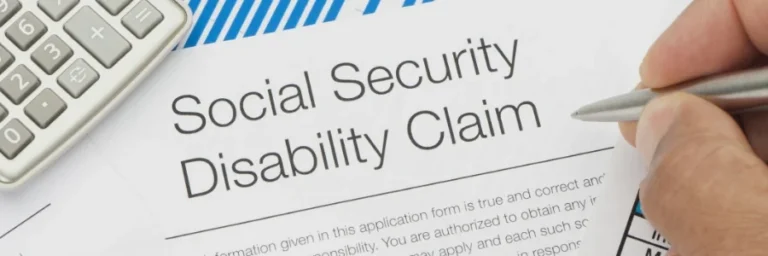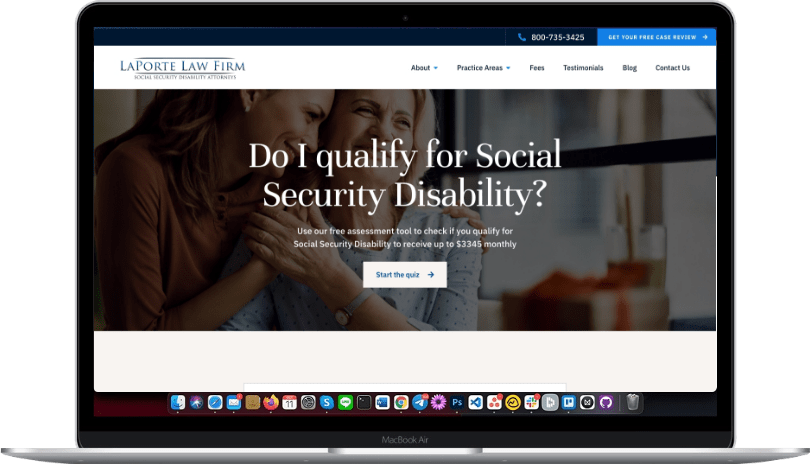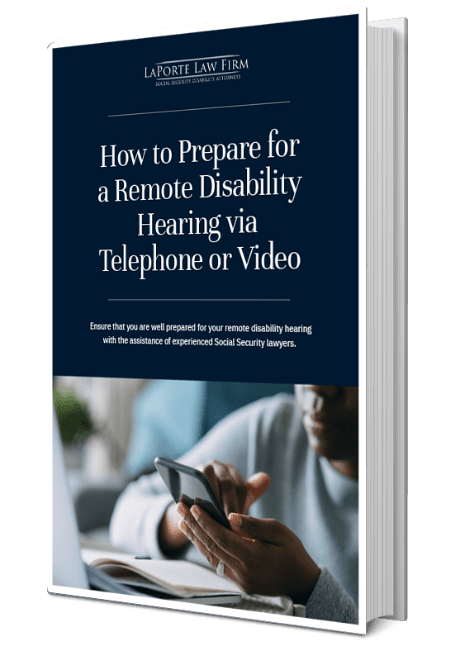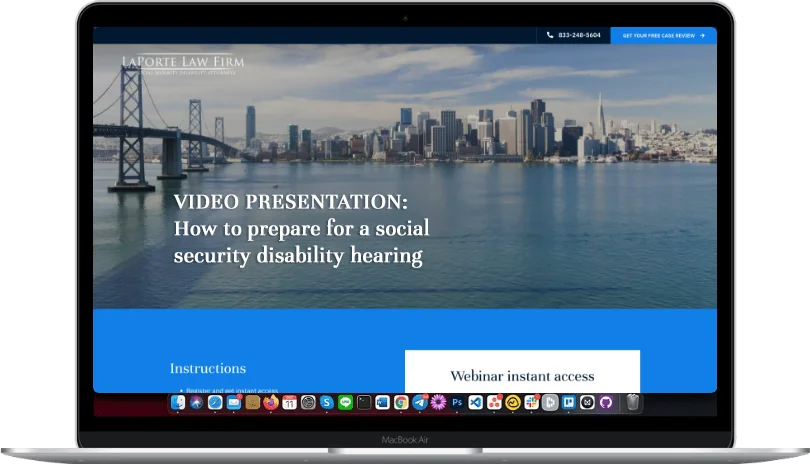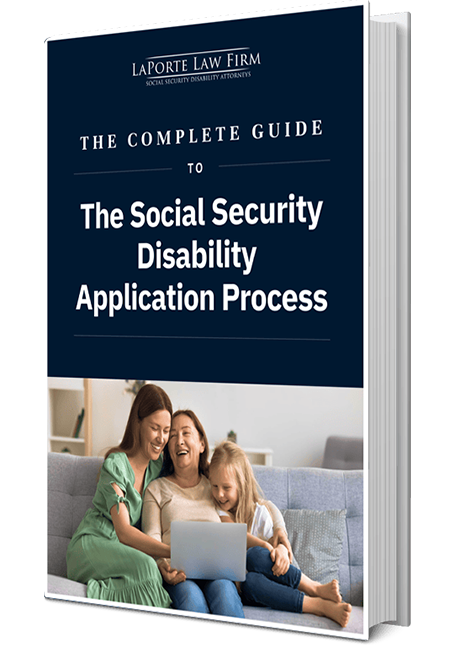
Waiting for your Social Security Disability Insurance (SSDI) back pay can feel like being stuck in limbo. You have already made it through the toughest parts, filing your claim, collecting medical evidence, and maybe even enduring the long appeals process that can stretch on for years, only to be left asking: Where’s my money, and why is it taking so long, yet again?
For most people, back pay isn’t just extra money; it is the bridge that keeps them afloat after months or years without income. It covers the gap between the day you became unable to work and the day your monthly benefits finally begin. That is why every delay matters. Rent, medical bills, and basic living expenses don’t stop just because your case is moving slowly through the system.
The silver lining is this: when you hear that your claim is “at the payment center,” it means you’re finally in the home stretch. The Social Security Administration (SSA) has approved your claim, and their specialized payment office is now handling the last step, reviewing your file, making sure the math is right, and releasing your back pay. In the sections that follow, we’ll walk through what this stage really means, why it sometimes takes longer than expected, and what you can do to track your case and keep things moving.
Understanding SSDI Back Pay
The SSA is more than just a benefits-paying agency. When you win your case, the SSA verifies eligibility, determines the correct onset date, calculates the exact amount owed, and ensures that both your monthly benefits and any back pay are distributed accurately. It is a process that requires coordination between your local field office, the hearing office (if you had a hearing), and ultimately, the payment center.
What is SSDI Back Pay?
SSDI back pay (or SSI back pay) refers to the retroactive benefits owed to you between your established disability onset date (or application date, in the case of SSI claims) and the date your regular monthly benefits begin.
For example, if you applied in January 2023 but the SSA determined your disability began in April 2021, you may be entitled to up to 12 months of retroactive back pay before your application date, in addition to any months that accrued while your appeal was pending. If your case dragged on through appeals for several years, your back pay could cover that entire period, reduced only by the five-month waiting period required under the law for SSDI cases.
This is why back pay often arrives as a substantial lump sum. It is meant to make up for the months (sometimes years) when you were unable to work but had not yet received benefits. For more information about the maximum disability back pay, check out our blog post on the subject.
The Path to Payment: What Precedes This Stage
Before any Social Security benefits are paid out, your claim goes through several additional steps — even after it’s been approved. These steps vary depending on the type of benefit you’ve applied for. Whether you’re receiving disability benefits (such as SSDI or SSI) or retirement, spousal, or survivor benefits, there’s a process that determines when and how your payments begin. Below, we break down what happens next for each benefit type.
For disability benefits (SSDI and SSI)
Once the SSA approves your claim for disability, it does not mean payment is immediate. The next step is for the SSA to send your case to the payment center, where staff members calculate the precise benefits owed. For SSDI, this usually includes both:
Ongoing monthly benefits, which the SSA sets up going forward; and
Retroactive or back pay, which may be released as a lump sum.
For SSI claims, payments are handled differently. Before releasing back pay, the SSA may conduct additional income and resource checks. SSI cases also include a calculation of ongoing monthly benefits, and retroactive back pay is typically released in three separate installments, spaced six months apart.
For more information about SSI eligibility and payment information, check out our blog posts on the topic: Can I Get SSI If My Spouse Gets SSDI? and What Time Does SSDI Direct Deposit into Back Account?
For retirement, spousal, and survivor benefits
Not all claims are processed through the payment Center. In many retirement, spousal, or survivor benefit cases, the local Social Security field office can finalize the award directly, especially when there are no complicating factors.
However, more complex cases, such as those involving workers’ compensation offsets, overpayment recovery, multiple entitlement situations, or cross-program issues, the claim is routed to a Program Service Center, or payment center. In those situations, the payment center is responsible for verifying eligibility, making technical adjustments, and issuing the official Notice of Award before payments begin.
Decoding the “Payment Center” Role: More Than a Physical Place
Many people assume that the payment center is just another SSA office, but it’s actually a key part of the process that determines how and when your payments are issued. The following sections explain what the payment center is, where it fits into the SSA structure, and how it operates, especially for disability claims.
Defining the “payment center” in the SSA context
The payment center is not the same as your local SSA office. It is a specialized unit within the SSA dedicated to processing benefit calculations and back pay once your claim has been approved.
Where it fits into the SSA structure
Think of the payment center as the final checkpoint before money actually hits your bank account. Your case typically goes through these steps:
Review by the local SSA office or hearing office
Issuance of an approval or a decision notice
Calculation and set up by the payment center
Disbursement of funds by the US Treasury Department
Inside the “Payment Center”: What Happens Next for Your Benefits
Payment centers handle thousands of cases across the country. Their work includes calculating complicated benefits involving dependents, workers’ compensation offsets, retroactive adjustments, and ensuring ongoing benefits are set up correctly. Below, we outline the main steps that take place during this stage.
Finalizing benefit calculations and back pay
Staff review your file, apply the correct onset date, subtract the statutory five-month waiting period when applicable, and calculate any offsets (e.g., if you received workers’ compensation or state disability insurance). Only after this review is complete can your lump-sum back pay be authorized.
Processing your official Notice of Award
The Notice of Award is your written confirmation that the claim is approved. It details:
Your monthly benefit amount
The back pay amount
Deductions for attorney’s fees (if applicable)
Information about dependents’ benefits (if applicable)
For more information about what is in a Notice of Award, check out our helpful blog article on the subject.
Setting up your payment method
The SSA typically sets up direct deposit, but you may also receive funds through a Direct Express debit card. Once ongoing payments are established, you will receive them monthly.
Because SSDI benefits can be taxable depending on your income, you will receive annual tax documents (Form SSA-1099) reflecting what you’ve been paid. Keeping good records at this stage is critical. For more information about how a lump-sum back payment is taxed, check out our helpful blog article: Do You Have to Pay Taxes on a Lump-Sum Back Payment?
Timelines and Expectations: When Will Your Back Pay Arrive?
The SSA doesn’t operate on a fixed schedule for everyone, but there are common timelines and key milestones that can help you get a sense of what to expect.
Key Dates that Influence Your Back Pay
There are three important dates influence your back pay and how long you will have to wait for your funds to arrive:
Date of disability onset (as determined by the SSA)
Date of claim approval
Date of Notice of Award
These milestones affect both the amount owed and when payment is released. This is the data that the Payment Center reviews when calculating your total back pay.
Timelines for initial payments and back pay
While timelines vary, claimants often see their first regular SSDI payment within 30–60 days after approval. Back pay typically issued a few weeks after the first regular payment, though it may take longer in some cases.
The SSA sometimes prioritizes cases differently depending on age:
Claimants 54 and under may see more routine processing timelines.
Claimants 55 and older (often subject to Grid Rules” in disability law) may experience closer scrutiny, but the payment center generally prioritizes finalizing their awards as well.
Average processing times for back pay
Most back pay is released within 1–3 months after approval. However, complex cases (i.e., those involving multiple claims, overpayments, or dependent benefits) can take longer. If your application is missing or has conflicting wage records, you may also experience significant delays.
How to track your back pay status
Use your my SSA account to check payment status. If your case is still listed as “processing,” it likely remains at the payment center.
Common Issues and How to Resolve Them
Even after your claim is approved, delays and errors can still occur, especially when it comes to back pay. Fortunately, there are steps you can take to stay informed and address problems if they arise.
What to do if your back pay is overdue
Delays happen. If it has been longer than 90 days, follow up with the SSA, ideally in writing, to create a paper trail. If the SSA is waiting for additional information from you — for example, your California State Disability notice of exhaustion — you should provide them with any requested information as soon as possible to avoid further delays with processing.
Discrepancies in back pay amount
Always review your Notice of Award carefully and compare it with your own records, such as the date you applied, the date you stopped working, and the benefit amount you expected. If something appears incorrect, you can request a recalculation and ask the SSA to issue an amended notice. Errors sometimes occur, particularly with offsets for other public disability benefits such as Workers’ Compensation or State Disability Insurance (SDI), and these can significantly affect the monthly benefit amount you receive.
Communication best practices with the payment center
To avoid unnecessary delays and stay in the loop, here are some tips for communicating clearly and consistently with the SSA.
Call the SSA’s main line at 1-800-772-1213, but ask specifically about the payment center.
Keep copies of every letter and note the date/time of every call.
Be persistent and polite. Payment errors can take time to untangle.
How to check your case and payment status
Your my Social Security account remains the best resource, though you can also contact your local field office for updates.
What to do if you spot an error or have questions
Escalate persistent issues through the SSA’s appeals process if necessary. For example, you can file a Request for Reconsideration, and if that is denied, request a hearing with an administrative law judge. In cases of clear error, an attorney or representative may be able to push for a quicker correction.
The Advantage of Professional Representation: How Attorneys and Non-Attorney Representatives Assist with Back Pay
Back pay issues can be confusing and frustrating, especially when errors or delays occur. An experienced attorney or representative can help you navigate this part of the process, making sure your payment is accurate and that your case stays on track.
A representative can:
Review your Notice of Award for accuracy.
Ensure that theSSA correctly applied offsets or deductions.
Communicate with the payment center on your behalf.
File appeals if the back pay is calculated incorrectly.
Understanding representation registration and representative conduct
The SSA requires a formal appointment (Form SSA-1696) and recognizes both attorneys and non-attorney representatives. Representatives are bound by strict rules of conduct, ensuring professional handling of your claim and financial interests.
If you’re facing delays or discrepancies with your Social Security back pay, including issues with the payment center’s processing, LaPorte Law Firm is here to help. Our experienced attorneys will review your case, communicate directly with the SSA on your behalf, and fight to get you every dollar owed. Contact us today for a free consultation, and take the first step toward securing the benefits you deserve.
FAQS
It means your claim has been approved, and the SSA is calculating your back pay and setting up your monthly benefit payments.
Back pay is calculated differently depending on the type of claim.
For SSDI cases, it is based on your established disability onset date, minus the required five-month waiting period, and can include up to 12 months of retroactive benefits prior to your application date if you were found disabled during that period.
For SSI cases, back pay begins no earlier than the date of your application and is subject to income and resource limits. After your claim is approved, payments are usually issued within 1–3 months, following a financial eligibility interview with the SSA.
It is the SSA’s official letter confirming your approval, your benefit amount, and details about your back pay.
Log into your my Social Security account or call the SSA directly, either at their national 1-800 number (1-800-772-1213) or through your local office (use the SSA zip code office locator to find the correct office), to confirm whether your case is still being processed at the payment center.
Document everything, follow up with the SSA, and consider working with a representative, when applicable, to push for a resolution.










